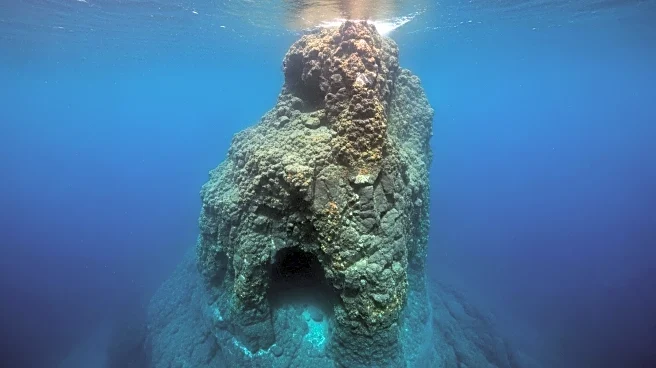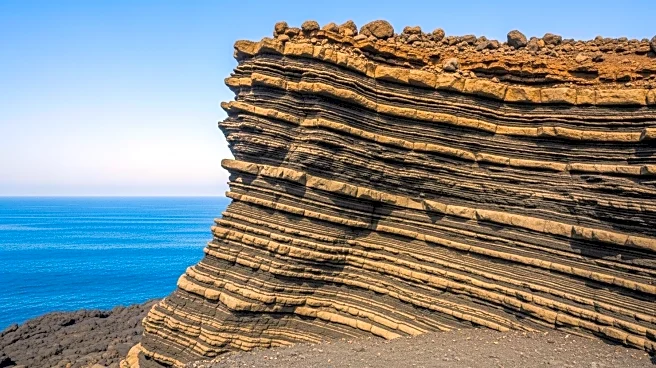What's Happening?
Researchers from the University of Cambridge have uncovered the reasons behind the extensive volcanic activity in the North Atlantic region, dating back 60 million years. The study reveals that variations in the thickness of tectonic plates around the North Atlantic facilitated the widespread distribution of volcanic activity. The Icelandic mantle plume, a hot rock fountain rising from Earth's core-mantle boundary, was funneled through thinner tectonic plates, spreading molten rock over a vast area. This discovery helps explain the formation of volcanoes and lava outpourings across regions like Scotland, Ireland, and Greenland, and sheds light on the geological processes that shaped the seafloor and ocean circulation.
Why It's Important?
Understanding the behavior of the Icelandic mantle plume is crucial for comprehending the geological history and current volcanic activity in the North Atlantic. The findings have implications for seismic hazard assessments and geothermal energy resource mapping, as areas with thinner lithosphere are more prone to volcanic activity and may offer geothermal energy potential. The research also contributes to broader knowledge about Earth's tectonic processes and their impact on climate and ocean circulation over time. This insight can inform future studies on volcanic activity and its effects on the environment.
Beyond the Headlines
The study highlights the importance of seismic tomography and thermography in revealing hidden structures within Earth's interior, offering new methods for assessing geothermal energy resources globally. The correlation between lithosphere thickness and volcanic activity may lead to advancements in predicting and mitigating seismic hazards. Additionally, the research underscores the interconnectedness of geological processes and their influence on climate and environmental conditions, providing a deeper understanding of Earth's dynamic systems.











